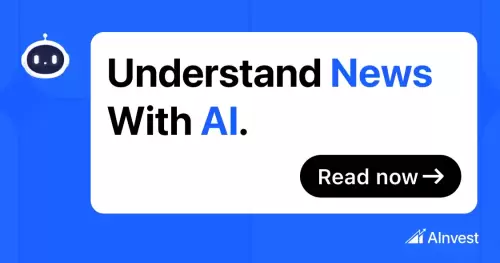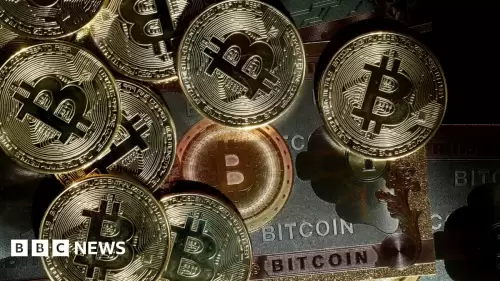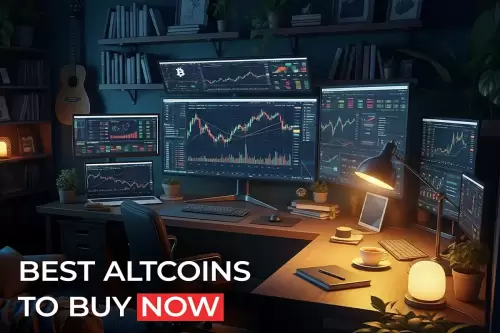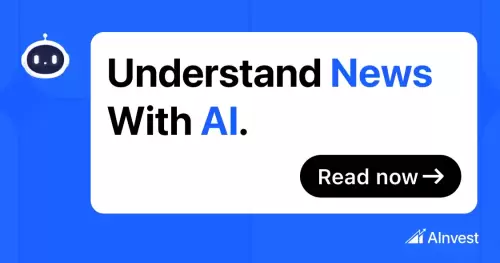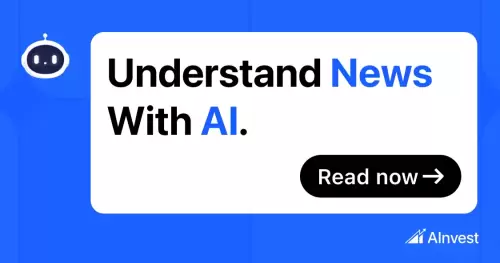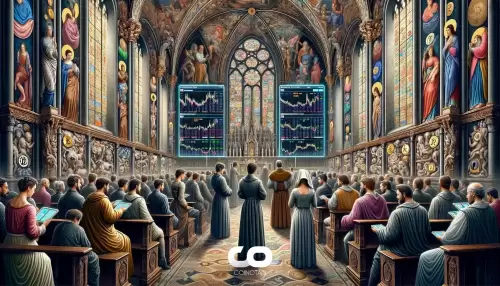 |
|
 |
|
 |
|
 |
|
 |
|
 |
|
 |
|
 |
|
 |
|
 |
|
 |
|
 |
|
 |
|
 |
|
 |
|
Cryptocurrency News Articles
As the Crypto Market Enters a New Growth Cycle, Two Projects Are Emerging as Serious Contenders
May 14, 2025 at 07:00 pm
As the crypto market enters a new growth cycle, two projects are emerging as serious contenders for delivering substantial returns: BlockDAG (BDAG) and Bitcoin Solaris (BTC-S). Both are rapidly scaling ecosystems with pre-exchange access, drawing in early investors with the promise of disruptive technology, user-level participation, and the potential to build real wealth in 2025. However, while the projects share an optimistic outlook and early adopter interest, the way they achieve those goals — and the kind of users they attract — differs significantly.
BlockDAG is positioning itself as a high-speed, DAG-based network focused on performance and developer infrastructure. In contrast, Bitcoin Solaris emphasizes user inclusion, a fixed-supply economic model, and daily rewards through mobile mining for every user. For those looking to get rich not just by holding, but by actively earning, the differences between these projects are more than technical — they’re foundational.
BlockDAG: DAG Architecture and Presale Acceleration
BlockDAG is built on Directed Acyclic Graph (DAG) architecture, designed to solve the scalability limitations of traditional blockchains. With a DAG-based Proof-of-Work consensus, it enables simultaneous block creation, which improves transaction throughput and reduces congestion.
This technology is combined with a modular structure, allowing developers to build dapps and integrate them seamlessly. BlockDAG also features EVM compatibility, permitting the migration of existing Solidity-based dapps to its ecosystem.
To engage a broader audience, BlockDAG has launched its X1 Miner App, which has already reached over one million downloads. The app allows users to mine BDAG on their mobile devices, eliminating the need for specialized hardware or technical knowledge.
Moreover, BlockDAG has completed audits from both Halborn and CertiK—two recognized security firms in the crypto space—to ensure the safety and transparency of its smart contracts.
As of its latest update, BlockDAG has managed to raise over $226 million in its presale and sold more than 19.6 billion tokens. The current token price is $0.0019, with a projected listing price of $0.05—suggesting an expected ROI above 2,500% if targets are met.
This presale traction and mobile-friendly infrastructure have made BlockDAG one of the most discussed high-upside tokens for 2025, especially for users looking for capital appreciation through early-stage positioning.
Bitcoin Solaris: Mobile Mining, Fixed Supply, and Real Utility
In contrast to BlockDAG’s focus on technical performance and a massive user base, Bitcoin Solaris takes a very different approach. Rather than emphasizing speculative ROI, it provides direct, daily earning potential through its Nova App, which turns any smartphone into a passive income source.
Users allocate a few gigabytes of storage and background CPU, and the app rewards them in BTC-S tokens based on uptime —no staking, no delegation, and no steep learning curve to join the ecosystem.
The blockchain itself is powered by a dual-layer architecture: a Base Layer using Proof-of-Stake (PoS) and Proof-of-Capacity (PoC) for energy-efficient security, and a Solaris Layer using Proof-of-History (PoH) and Proof-of-Time (PoT) to achieve smart contract execution at over 10,000 transactions per second with 2-second finality.
Crucially, Bitcoin Solaris enforces a fixed supply of 21 million BTC-S tokens, with only 4.2 million (20%) allocated for presale access. There is no inflation and no dynamic minting. Participants are rewarded based on participation — not investment size — making it an ideal model for users in search of sustainable, daily crypto income with real scalability behind it.
Currently in Presale Phase 3, BTC-S is priced at $3 USDT. This phase positions users ahead of centralized exchange listings and the full rollout of Nova App mining. Unlike other networks where price action is the only return mechanism, Bitcoin Solaris allows participants to get rich through consistent earning, not just appreciation.
Disclaimer:info@kdj.com
The information provided is not trading advice. kdj.com does not assume any responsibility for any investments made based on the information provided in this article. Cryptocurrencies are highly volatile and it is highly recommended that you invest with caution after thorough research!
If you believe that the content used on this website infringes your copyright, please contact us immediately (info@kdj.com) and we will delete it promptly.






















































